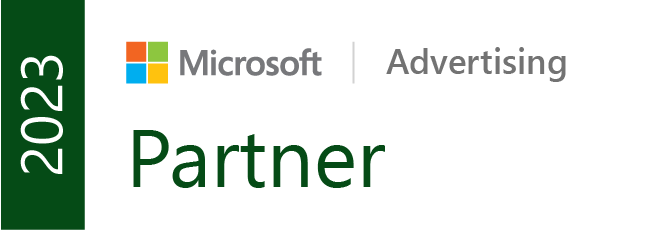
Welcome to “Inceptly’s Weekly Marketing Recap!,” your go-to source for the three most compelling articles of the week.
Whether you’re a marketing pro, an aspiring marketer, or simply someone interested in the ever-evolving marketing world, this blog is your ticket to staying informed and inspired.
Let’s dive right in and explore the top three must-read articles of the week.
1. How a vision supplement ad used Kafka’s trick to make you believe the impossible
What if I told you that the secret to creating wildly successful video ads wasn’t hidden in some exclusive marketing mastermind or expensive course, but sitting on your bookshelf in the form of century-old literature?
When George Saunders analyzed the craft of legendary writers like Tolstoy, Chekhov, and Kafka in “A Swim in a Pond in the Rain,” he wasn’t just teaching literature—he was revealing the timeless principles of human persuasion. These writers didn’t achieve worldwide success and sell hundreds of millions of copies by accident. They mastered specific techniques for capturing and holding human attention.
Consider this: Leo Tolstoy sold over 400 million copies of his books. Franz Kafka created a writing style so distinctive that his name became an adjective used worldwide. Anton Chekhov wrote over 500 short stories that still captivate readers more than a century later. These writers didn’t achieve immortal success by accident—they cracked a code for capturing and holding human attention that transcends time, culture, and medium.
Now, what if I told you that three modern video ads—with a combined advertising spend of $12.9 million—are using the exact same psychological techniques that made these literary giants legendary?
I can’t argue whether the creators of these three successful ads studied “War and Peace” before creating their campaigns. They may never have read George Saunders’ brilliant analysis of the master storytellers in “Swimming in the Pond in the Rain.” Yet their ads are successful because they tap into the same timeless principles of human persuasion that Saunders decoded from the greatest minds in literature.
In the next few minutes, you’ll discover:
Why a debt relief ad uses the same “escalation technique” that made Tolstoy’s character transformations unforgettable
How a vision supplement commercial employs Kafka’s mastery of “logical impossibility” to make outrageous claims believable
The specific “character development through specification” method that Chekhov pioneered—and how it turns generic testimonials into compelling proof
Why the “Things I Couldn’t Help Noticing” principle explains exactly when and why viewers stop scrolling (and how to prevent it)
The “ruthless efficiency” filter that separates amateur copy from million-dollar messaging
More importantly, you’ll learn how to apply these century-proven techniques to your own campaigns. Because while marketing tactics change with every algorithm update, the fundamental principles of human psychology—the ones these literary masters perfected—remain constant.
The writers we’ll study have outlasted empires and influenced billions of minds. Their techniques work just as powerfully in a 60-second video ad as they do in a 600-page novel. The only question is: Will you use them before your competitors do?
Let’s dissect how these ads use Saunders’ insights to achieve direct response gold.
Read the whole article here.
2. YouTube Launches 30-Second Non-Skippable Ads for Connected TV
YouTube has quietly rolled out a new 30-second non-skippable ad format for Connected TV (CTV) devices — now available in limited beta.
This addition gives advertisers a dedicated slot designed for large screens, ideal for storytelling in high-attention environments like living rooms.
Find all key details here.
3. 5 AI tactics top YouTube advertisers are quietly using to scale faster in 2025
In the past, media buyers thrived on a mix of sharp instincts, granular controls, and deep platform knowledge. In 2025, that toolkit still matters — but AI has fundamentally changed how YouTube campaigns are built, optimized, and scaled.
Artificial intelligence now touches every layer of a YouTube ad strategy: from smarter targeting and predictive bidding to dynamic creative generation and real-time optimization. It’s not just automating routine tasks — it’s uncovering patterns, surfacing micro-moments, and giving marketers new levers for performance.
But this isn’t about letting machines take over. The most successful advertisers today know where to let AI run — and where to rein it in. They use it as a force multiplier, combining algorithmic efficiency with human strategy, brand voice, and ethical judgment.
In this article, we’ll dive into five critical areas where AI is revolutionizing YouTube ads — not in theory, but in practice. From Demand Gen to creative repurposing to AI-driven audience exclusions, these are the shifts savvy marketers are already leaning into.
Remember to bookmark this page and share your thoughts with us in the comments section below. Your feedback is invaluable to us.
Want more content like this?
Don’t miss out on the latest news and updates from the world of Direct Response advertising! Subscribe to our newsletter today 👇
Want to brainstorm with our team on new ways to scale your business with YouTube Ads (and other performance video platforms)?
Join us for a free YouTube ad brainstorming session:
Like this post? Let's continue the conversation!
Get in touch with us by shooting us a quick email or tagging us on LinkedIn or Instagram, and sharing your thoughts. Your feedback helps us keep our blog relevant and interesting.
Get Our Newsletter
Need Help?
Get in touch with us for an insightful evaluation of your ads + actionable tips to help amp up your direct response revenue



